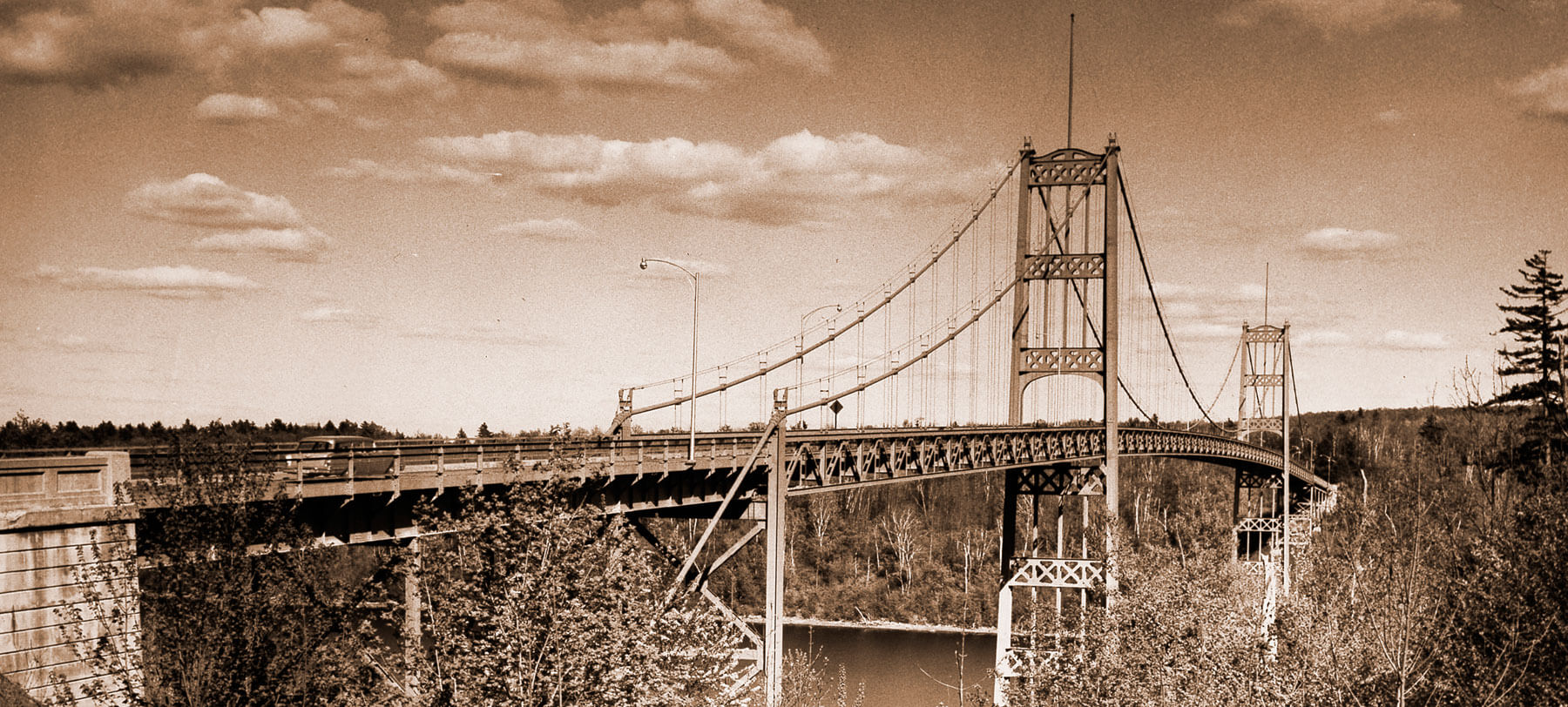
Waldo Hancock Bridge
History of the Former Waldo-Hancock Bridge
The Penobscot Narrows region is rich in transportation history. Prior to the construction of the Waldo-Hancock Bridge, a ferry regularly carried passengers across the Penobscot River. In 1929, the Maine legislature authorized $1.2 million in 30-year bonds to build the Waldo-Hancock Bridge, with the understanding that the cost would be recouped by tolls. What began as a traffic necessity to accommodate the increasing number of northbound travelers on Route 1 soon became a historical and economic landmark as well as an example of engineering innovation.
Construction began in late summer of 1930 and continued through winter. Built in record time, the Waldo-Hancock Bridge opened on November 16, 1931, providing a vital link between the inland population of Maine and the international maritime commerce of the coast.
As word of the magnificent steel structure spread, the bridge facilitated growth and tourism in the region east of Bucksport. Visitors from across the state and New England flocked to admire the engineering marvel designed by the renowned David B. Steinman of New York. Designed to be historically relevant to the region and to its neighbor, Fort Knox, Steinman emphasized straight lines with simple elements in repetition. He described the trusses as “a new artistic type emphasizing horizontal and vertical lines” that were compatible with the “rigor of the natural rocky setting, the stern lines of Fort Knox and the background of colonial architecture in the adjacent town.” Steinman’s innovation proved to be a success: enough visitors paid a 35-cent toll each way so that by 1953, only 31 years after its completion, the $ 1.2 million construction cost was completely recouped. The 35-cent toll would translate to more than $4 today.
In 2003, when MaineDOT was partway through a major rehabilitation of the main suspension cables of the 71-year-old bridge, engineers unexpectedly discovered the severe corrosion of the cables which had been hidden by protective sheathing. Engineers agreed the cables were too corroded to save and the bridge would need to be replaced as soon as possible. For safety, the Waldo-Hancock Bridge load was reduced overnight from 100,000 to 24,000 pounds.
Over the next 16 weeks, 16 new strengthening cables were designed, fabricated, and installed, a feat never before accomplished on a standing suspension bridge. Half the bridge’s weight was transferred to these new cables. This engineering and construction innovation assured the safety of the Waldo-Hancock Bridge while its replacement was built.
